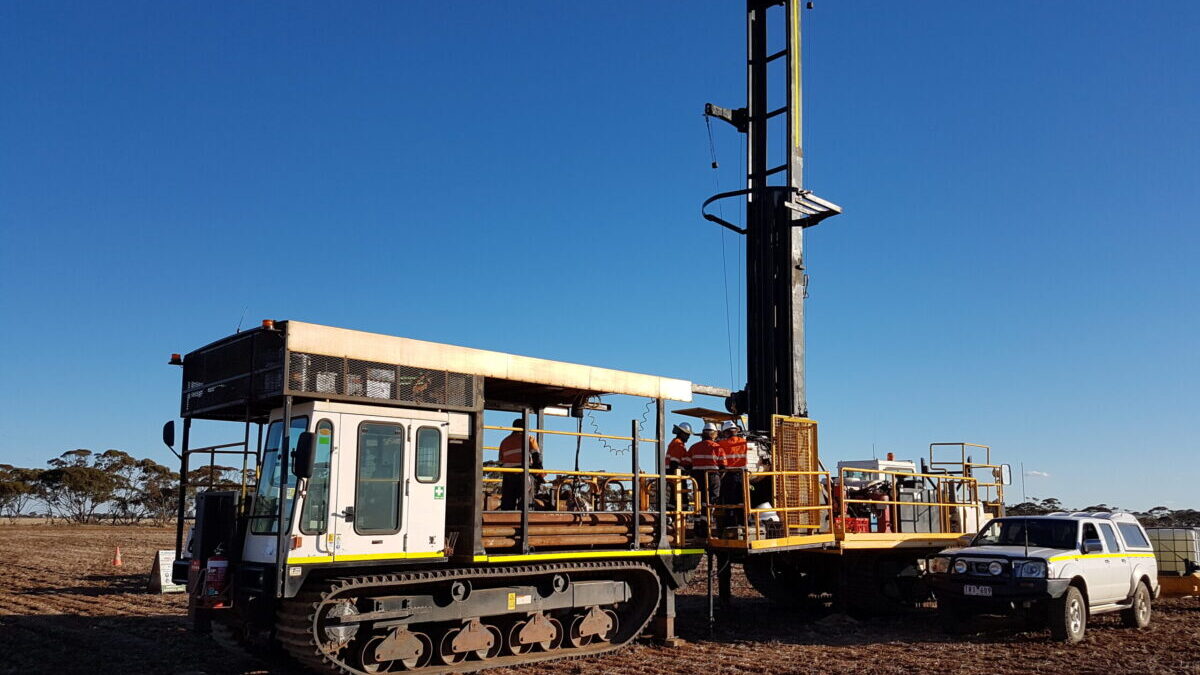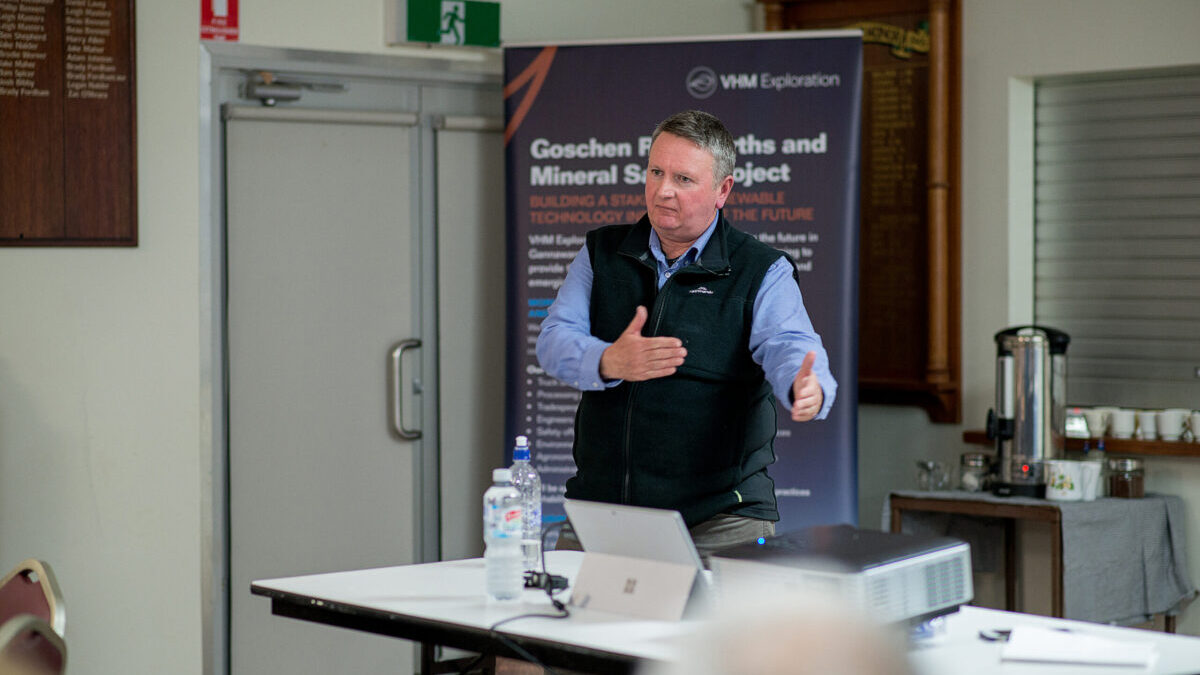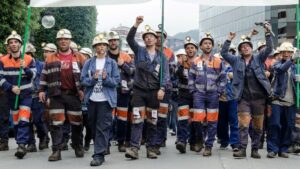Why mineral sands could become critical to Australia’s position in the rare earths race

The earth is rare in South Australia, somewhere. Via Getty
- VHM completed a refresh of its DFS on the unique Goschen deposit in Victoria’s Murray Basin last week
- The project could produce almost 10,000t of rare earth concentrate a year, with by-products from over 130,000tpa of zircon-titanium rich heavy mineral concentrates
- Managing director Graham Howard said the world is waking up to the supply challenge in rare earths, where China currently dominates
Backed by rich-lister Chris Ellison, a new mineral sands and rare earths play thinks the erosion of granites in Victoria’s Murray Basin could hold the key to Australia grabbing a larger share of the global market for rare earths.
The supply chain for the suite of critical minerals is almost completely dominated by China, with Australia playing host to the largest miner outside the Middle Kingdom in WA-based Lynas Rare Earths (ASX:LYC).
Two other companies operating in WA and the NT, Arafura Rare Earths (ASX:ARU) and Hasting Technology Metals (ASX:HAS), are closing in on development and are planning to mine a similar deposit style to Lynas’ Mt Weld at their Nolans and Yangibana projects, where rare earth minerals prized for use in EVs and wind turbines are hosted in a rock type called carbonatite.
A slew of other companies are exploring for ionic clay rare earths across the country, looking for deposits similar to those responsible for the bulk of production in Southern China but yet to be commercialised in the land of Oz.
VHM’s (ASX:VHM) Goschen project is distinct, a shallow multi-commodity asset made for the modern world by geological processes started millions of years ago.
“We knew that there was a very unique granite — think of Greenland and how Donald Trump wanted to buy Greenland and this granite they had,” VHM managing director Graham Howard said.
“What no one really realised is just sitting out here is a giant granite which is full of rare earths, Lake Boga.
“That granite has a whole lot of pegmatites with rare earths in them, but what’s really important is it formed an island when the Murray Basin was a sea and the sea eroded that granite and removed the rare earths and concentrated those rare earths with zircon and titanium in sand deposits on the flanks of the island.”
As the sea eroded it removed gangue minerals like quartz and feldspar and liberated the rare earths, which can be mined to just 30m below surface.
“What we know is that this is a giant class of deposit. We’ve got 629 million tonnes in inventory around Goschen, but we only use our data,” Howard says.
“When you actually put historic data in we have an exploration target, and that takes it up to about 6 billion tonnes just for Goschen.”

Over 400,000t of rare earths
VHM, which has a supply MoU already with Chinese major Shenghe Resources, has 413,107t of total rare earths oxides in resources.
A refresh last week of its pre-listing DFS, delivered ahead of last year’s $30m ASX float, put some strong numbers around the planned Victorian development, which could be in production by the first half of 2025 if approvals come through in the second half of this year as planned.
At a capex of $500 million, the project could produce 9428t of rare earth mineral concentrate or 8568t of mixed rare earth carbonate and 134,500t of zircon-titania heavy mineral concentrate annually over 20 years at a 5Mtpa processing rate.
The mine would cost $500 million to build but operate at just $57/t against an average revenue of $118/t over its first decade, with an NPV of $1.5b and IRR before tax of 44%.
For the first phases of the mine, included in last week’s study update, VHM expects to deliver revenues of around $560m a year over the first 10 years, around three quarters of that from rare earths.
Phase-1 is the base project with Phase-1A expected to begin around six months after and include the installation of a hydrometallurgical plant to convert the rare earth concentrate to carbonate.
Further down the line, VHM is assessing added processing steps that could see it move into the separation of mineral sands into zircon, zircon concentrate, leucoxene, rutile and ilmenite in Phase-2, and the holy grail of separating rare earths in an on site refinery in Phase-3.
Howard says that is a ‘longer term ambition’, one which would place it alongside ASX 100 miner Iluka Resources (ASX:ILU), which received a $1.25 billion federal government loan to establish the nation’s first rare earths refinery at Eneabba in WA last year.
With that step comprising what would be major nation-building project in Australia’s east, Howard hopes to see continued government support to develop critical minerals manufacturing in Australia.
“We do need to have government involvement in the sector and if you look around internationally, overseas governments through Europe, North America, through Southeast Asia, there is very strong government support for their manufacturing bases,” Howard said.
“In Australia, we need to see the same and I fully support that we need to see strong government support in the sector, because this basically matches the requirements to go carbon neutral by the target dates.
“This is in the sweet spot for saving the planet.”

Key advantages
VHM’s Goschen project has significant by-product credits generated by churning out heavy mineral concentrate rich in zircon and titanium.
The decision to target a project with two revenue streams owes at least part of its origins to the combined experience of Howard and chairman Don Runge at Newcrest Mining (ASX:NCM) where Howard spent two decades in major operational and executive roles.
Runge was general manager at Cadia-Ridgway in New South Wales, currently among Australia’s two largest gold mines.
It achieves low to negative all in sustaining costs thanks to its copper by-product. The zircon and rutile from Goschen will fill a similar purpose for VHM.
“That was a copper and gold project and copper effectively paid the operating costs and gold came along as the primary mineral but it came along at negative cash cost,” Howard said.
“Don’s the guy who was the lead engineer for Ridgway.
“We understood the mechanisms behind that so we looked for a dual commodity stream. We saw it here and that is why we became very interested in this project because of the outstanding economics that this would yield.”
Then there is the basket of rare earths.
Around 87% of Goschen’s basket value will be generated from high value rare earths used in magnets for electric vehicles — expected to account for around 40% of magnet rare earths demand by 2035 — and wind turbines.
But unlike peers such as Lynas (ASX:LYC), a far larger proportion of that basket — around 30% — will come from heavy rare earths dysprosium and terbium. Terbium oxide, for instance, fetches over US$1500/kg — more than 15 times current NdPr prices.
“What is important to know is that the basket is unique,” Howard said.
“For the rare earths, a lot of rare earth producers or projects have a lot of neodymium and praseodymium — the lights.
“What we have here is 30% of our basket is dysprosium and terbium and 60% of the basket is neodymium-praseodymium.
“Terbium and dysprosium (prices) are quite high compared to neodymium and prasedymium. You’re talking substantial multiples of what NdPr pays.”
Buyers lining up
Rare earths prices have been coming off over the past couple months in China, but it remains the price-setter and core market for the commodities.
Under its MoU with Shenghe, VHM will sell around 6400t of rare earth concentrate and 100,000t of heavy mineral concentrate a year, ~60% of Goschen’s nominal Phase-1 production rate, over an initial three-year term from its first commercial shipment.
That remains subject to a range of conditions, with contract negotiations extended to April 30.
But Howard says ahead of financing and a final investment decision, demand is coming from near and far for Goschen’s products.
“Let’s be honest, right now China controls the market and they have physically established plants which can take this material,” Howard said.
“So we have that contract. What is very important is that we are in negotiations with European and North American and Southeast Asian groups on top of Shenghe.
“And basically, our products will be going to multiple destinations around the world, plus we’re in negotiations with national producers as well.
“So it’s not just one group, it’s actually a whole lot of groups.”
With long lead times from discovery to production — Goschen will have taken over 10 years to hit that milestone if VHM can meet its H1 2025 target — Howard thinks the world is only just realising its aching hunger for rare earths.
“In 2019, when I toured Europe with an Austrade delegation, I felt the world hadn’t woken up, we could see that there was a requirement for these minerals, but they hadn’t made the decisions,” Howard said.
“I was in Europe as part of the trade delegation in November and December late last year.
“And I can tell you they’ve got out of bed, and they’re actually really thinking about how to secure supply. They understand supply is key, they understand that there’s enormous demand, their communities are demanding rapid change, and they are acting on it.”
VHM (ASX:VHM) share price today:
Related Topics

UNLOCK INSIGHTS
Discover the untold stories of emerging ASX stocks.
Daily news and expert analysis, it's free to subscribe.
By proceeding, you confirm you understand that we handle personal information in accordance with our Privacy Policy.








